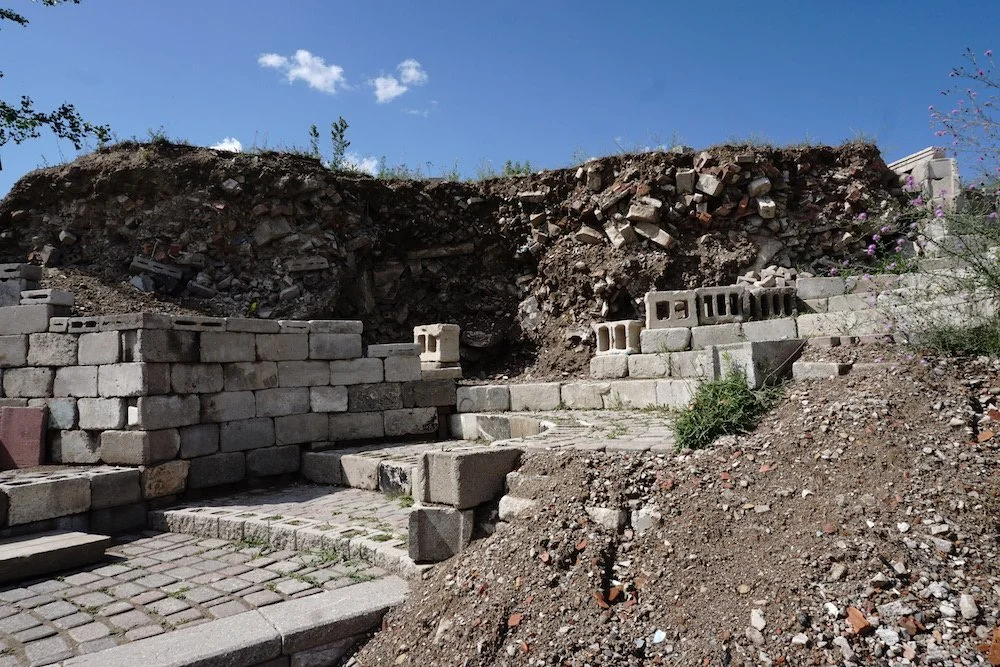About
Cat uncover’s and unearths unique, historical bricks and revives them with her lens.
ABOUT
Inspiring wonder and appreciation for hidden history within bygone objects.
I’m a multifaceted creative with a deep love for photography, drumming, and history, engaged in the creative community for 20+ years, currently focusing on preserving and celebrating collective heritage through visual storytelling. I’ve always been fascinated by wilder environments, forsaken institutions, deserted cities and urban decay. The structural remains of these once elaborate and people places – their ghostly bones – are as intriguing to me as their shed historical skin.
Through my lens, I seek to unveil the hidden stories and beauty within bygone objects, inspiring wonder and appreciation in those who view my work. Citybonez™, my photography trademark, captures the splendor of our collective architectural heritage. My images of historic bricks, Canadian logging industry historical branded wood pieces, and antique lead seals pay homage to the past while prompting viewers to consider the impact of human activity on the environment.
By showcasing the intricate details and rich tapestry of architectural structures, I encourage us to reflect on our place in history and the legacy we leave behind.
As a Board Member & Director at Artists' Network June 2022 - June 2024, I contributed to fostering a vibrant creative community through digital marketing, strategic planning, and support for local artists. During that time, I also collaborated with fellow board members to organize initiatives and strategies that promote artistic expression.
Artistic Achievements:
Artwork included in Permanent Curated Collections at:
- Simons, Toronto Eaton Centre, “Walk of Frames” Artist Collection
- Toronto Chamber of Commerce – Toronto Region Board of Trade
- Michael Garron Hospital, Thomson Centre.
Awarded Honourable Mention at Riverdale Artwalk 2025
Two images selected and featured in Our Homes Magazine, 2024, early summer edition.
Winning Artist at IMPACT 2022 for the piece Inukshuk. Received accolades for impactful visual storytelling and artistic expression.
Sculptural mask creation 'Mad Mask' selected as the featured artwork in the promotional materials for Gallery Stratford's Mask Exhibition in 2021.
Notable SHOWS:
Artist Project 2022, 2024, 2025
Rosedale Artfair 2023, 2024, 2025
Riverdale Artwalk 2021, 2022, 2023, 2024, 2025
Celebrating Canadian Creativity, June 17 - July 24, 2025. Omers Corporation, 100 Adelaide St. W.
True North Unshaken, Leslie Grove Gallery, July 3 - 27, 2025.
CONTACT Photography Festival, Aspectus: How we view things (juried), Art Casa, May 17 to June 7, 2025
Visual Arts Mississauga “Why Do You Create” Exhibition 2023
UpTown Pride, Dignam Gallery in Yorkville 2022
IMPACT 2022 Annual Juried Exhibition @ Art Space Connect and Parkview Galleries at Neilson Park Creative Centre
Art Gallery of Hamilton Art Show & Sale 2022
Artwalk in the Square 2022
SNAP Toronto Silent Auction 2022
Scotiabank CONTACT “ViewFind(h)er” 2022
Toronto Outdoor Art Fair Milestone 60th Anniversary 2021
Art Gallery of Mississauga Inaugural Juried Exhibition 2021
International Women's Day at Leslie Grove Gallery 2021
“Mask Exhibition” Gallery Stratford 2021
Historical Bricks - Paying photographic homage to our stately skeleton.
Citybonez™ pays homage to our stately skeleton, the building blocks of cities manufactured by local brickyards dating back to the 1880s. The images preserve relics from John Price Brick Maker on Greenwood Avenue, the Milton Pressed Brick Company in Milton, and the Don Valley Brick Works, which produced bricks in ten shades of red, seven shades of buff, olive gold, brown obsidian and mottled for such venerable landmarks as Massey Hall, Casa Loma, the Ontario Legislature and the University of Toronto's Hart House and Convocation Hall.
I discovered my reverence for bricks many years ago and became fascinated by their history and the stories each one tells. Digging through cast-offs from subway systems, skyscrapers, schools, churches, art galleries, libraries and theatres, I exhume the mud bones of our cities.
WOODZ - Paying historical photographic reverence to the Canadian Logging Industry.
Captured in stunning detail, each photograph tells a story of the forgotten history that lies beneath the surface of rivers. As I immerse myself into the depths, I am mesmerized by the intricate patterns and textures that have developed over time on these sunken timbers. The logs, once part of a thriving logging industry, were destined to be transformed into sturdy structures, furniture, and countless other wooden creations. They were carefully marked with company trademarks, serving as a testament to the craftsmanship and dedication of the loggers who harvested them. But fate had a different plan for these logs. As they journeyed down the mighty St. Lawrence River, unpredictable currents, treacherous rapids, and unforeseen obstacles caused many of them to sink to the riverbed. Over the years, they became hidden treasures, preserved by the cool, oxygen-deprived waters.
Each log end tells a unique story. Some bear the scars of their tumultuous journey, with deep grooves and scratches etched into their surface. But it is the company trademarks that truly captivate me. These intricate designs, carefully branded onto the logs, serve as a reminder of the human touch that once shaped these timbers. They are a testament to the hard work and dedication of the loggers who risked their lives to harvest these precious resources.
As I continue my exploration of the sunken timber, I am filled with a sense of reverence and gratitude. These logs may have never reached their intended destinations, but they have found a new purpose in my photographs. They serve as a reminder of the resilience of nature and the indelible mark that humans leave on the world around us.
A bit about bricks …
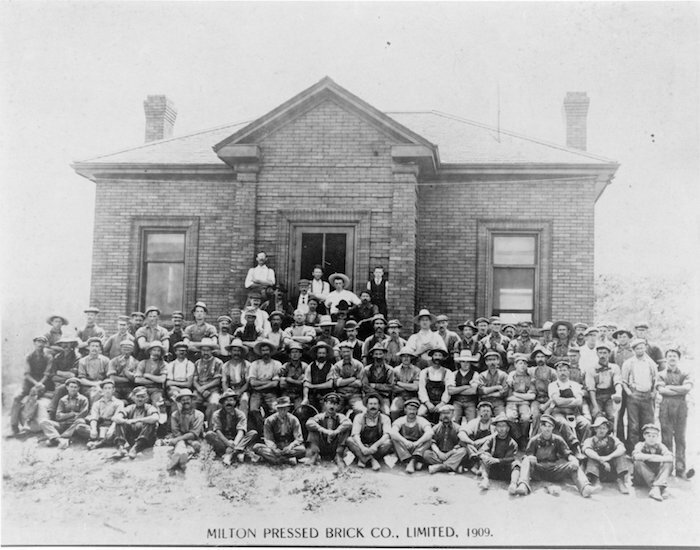
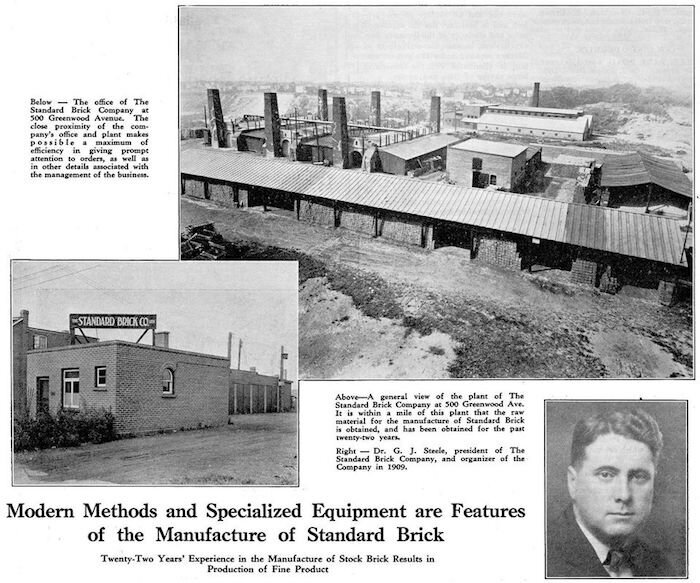
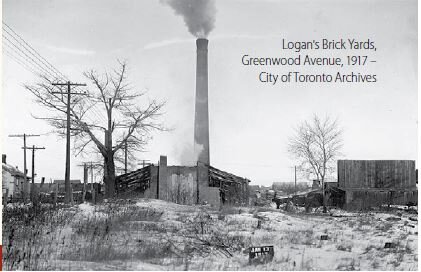
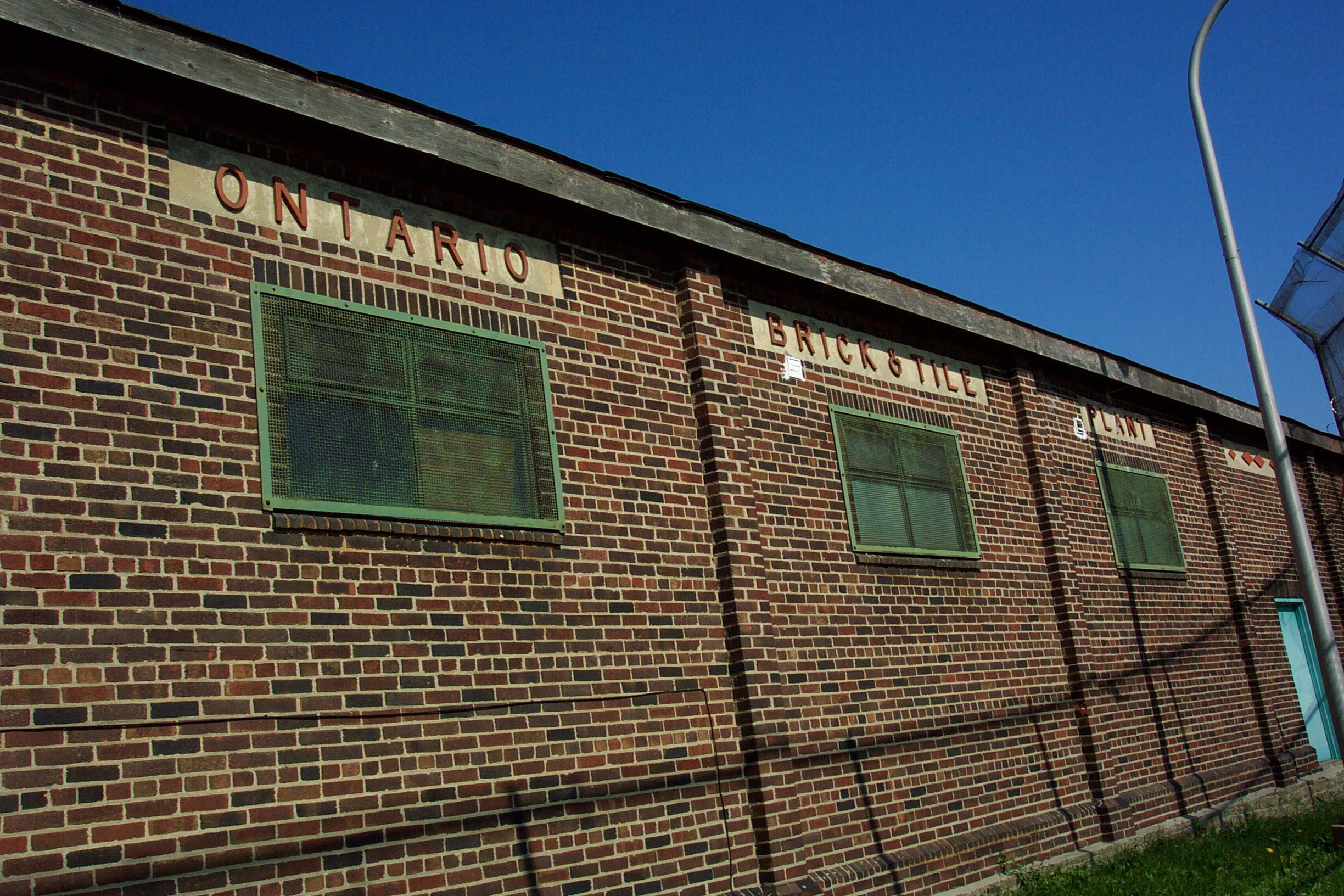

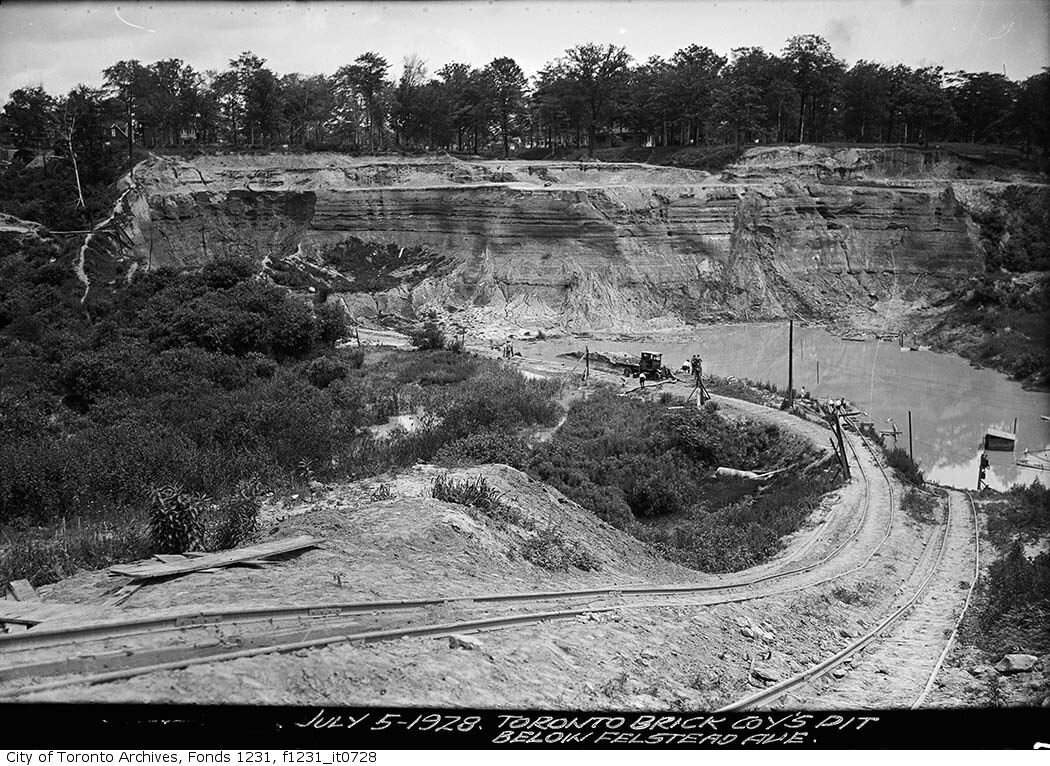
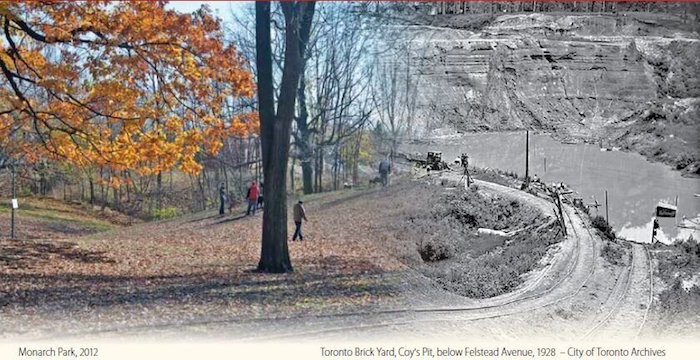
Brick making in Toronto was in huge demand following the Great Toronto Fire in 1904. Certain areas in east end Toronto had ideal soil for making bricks: the Don Valley, and Greenwood Ave. Clay along Greenwood Ave. was mined from local quarries. Brick making happened at brick yards located along Greenwood Ave. By the 1930s, the clay deposits on Greenwood were almost depleted. The John Price yard remained at 395 Greenwood (by then called the Toronto Brick Company) and ended up closing in the early 1950s.
The Don Valley Brick Works /Evergreen Brick Works is a former quarry and industrial site which operated for nearly 100 years and provided bricks used to construct many very well-known Toronto landmarks, such as Casa Loma, Osgoode Hall, Massey Hall, and the Ontario Legislature. Their bricks were used mostly in Toronto, but also across the continent. The bricks made were of such good quality that they won prizes at the Chicago World's Fair in 1893 and the Toronto Industrial Fair in 1894. [1] Since the closure of the original factory, the quarry has been converted into a city park.
Mimico Correctional Centre had inmates extracting shale, AND manufacturing bricks. The Centre actually started out in 1913 as the Ontario Reformatory. A shale deposit on 80 hectares of land was discovered on the east side of Kipling Avenue, between Evans and Horner avenues. The province established the Toronto Brick Company (renamed Ontario Brick and Tile Company by 1920) and inmates were taught a range of skills: extracting shale from the ground, manufacturing bricks and tiles, etc.
Milton Pressed Brick Co. existed in the early 1900s and closed in 1974. Milton bricks were known to be the cream of the crop during their time, due to a technique which pressed AND backed the brick. The William McFadden farmhouse gained heritage status, which is built primarily with Milton bricks.
If you’re familiar with the Richardsonian Romanesque structure at the corner of Broadview and Queen St. E. in Toronto, known as The Broadview Hotel, then you’re familiar with its gorgeous architecture, the semi-circular terracotta panels and brick enhancements. The reliefs were supplied by Toronto Pressed Brick & Terracotta Co., which opened in 1888 and their main product was pressed brick. Unfortunately in August of 1906, a Thursday night between 9 and 10 o'clock, a fire broke out in the engine room of the TPB Co. The origin of the fire still remains a mystery, but it is thought that it may have been caused by spontaneous combustion.
Hamilton Pressed Brick was founded in 1907. In its first 13 years of operation, the company baked more than 45 million 5 pound clay bricks. Eventually the brickyard used all of the clay excavated on its site and started to bring it in from outside the city.
In early 20th century, 36 brickyards edged Toronto, all making bricks for a growing city. By 1870, there were nine brick makers in Leslieville. Between 1874 and 1880, several more opened.


